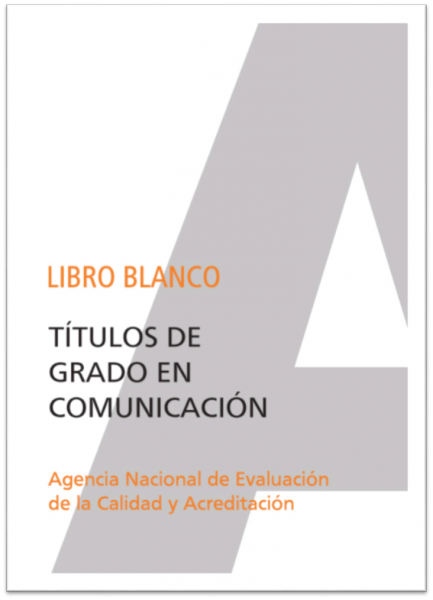
This project, funded by the National Agency for the Evaluation of Quality and Accreditation (ANECA), allowed a detailed analysis of the communication studies (journalism, audio-visual communication and public relations degrees) in Spanish universities. The main objective was to have a framework document for the adaptation of Spanish studies to European convergence, along the lines marked by the statements of the Sorbonne (1998) and Bologna (1999) and the Prague (2001) communiqué.
In 2003, there were 40 centers in Spain that provided at least one of the three degrees of communication, a figure which showed the increase in the last three decades. In general, the degrees were located in communication faculties and also in other centers, such as Letters, Social Sciences and Education or Librarianship and Documentation. The research was developed with the collaboration of all the Spanish universities in which one of the three qualifications mentioned was offered. For the coordination of the project, a working group was created called the Presidency of the ANECA Project in Communication, formed by Dr. Javier Davara (Complutense University), Dr. Xosé López (University of Santiago de Compostela) and Dr. Miguel Nieto (University of Seville) and directed by Dr. Marcial Murciano (Autonomous University of Barcelona).
The presidency established three subcommittees, one for each undergraduate degree. This decision was based on the different evolution of the Spanish and European labor market, which demanded increasingly different skills and abilities for each of the specialties and which translated into an increasingly segmented employability. Journalism requires differentiated knowledge of those of an advertising and these in turn are significantly different than those required to work in an audiovisual and multimedia production environment. In this sense, during the last decades, different professional associations have been consolidated in each of these sectors (professional associations of journalists, professional associations of journalists and journalists’ unions, professional associations in the audiovisual sector and trade unions in the same sector, as well as professional associations Advertising, etc.) with objectives, professional problems, labor markets and specific labor demands.
After completing the work commissioned by ANECA, it was concluded that the grouping of degrees was not appropriate in a single, general, but to maintain all three independently, taking into account the evolution of these professional careers and the experience of trajectories Academic differences.
Consult the White Paper of the Degree in Communication Sciences